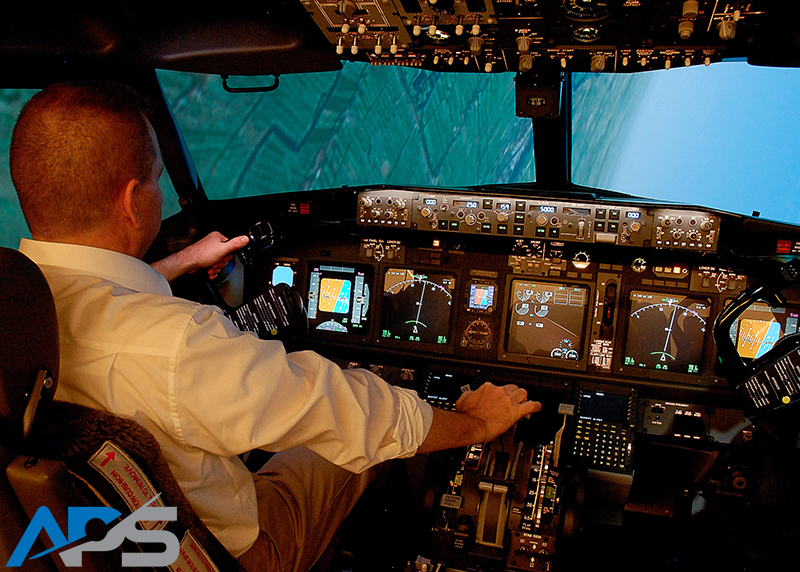 On May 17th of 2018 the FAA hosted an all day Upset Prevention and Recovery Training (UPRT) workshop at the Mike Monroney Aeronautical Center in Oklahoma City. Centered on new requirements involving UPRT and other extended simulator envelope requirements affecting Part 121 Air Carriers in the United States, the session allowed an open forum for sharing ideas on how various airlines are planning to execute training of instructors and pilots in order to comply with the FAR 121.423 deadline to have an approved program in place by March of next year.
On May 17th of 2018 the FAA hosted an all day Upset Prevention and Recovery Training (UPRT) workshop at the Mike Monroney Aeronautical Center in Oklahoma City. Centered on new requirements involving UPRT and other extended simulator envelope requirements affecting Part 121 Air Carriers in the United States, the session allowed an open forum for sharing ideas on how various airlines are planning to execute training of instructors and pilots in order to comply with the FAR 121.423 deadline to have an approved program in place by March of next year.
With over 30 different regional, cargo, and major airlines in attendance, there was a wide variance in approaches, and progress along the planning and execution spectrum for participating carriers in meeting the requirements of this regulation. As might be imagined, some of the larger airlines, with greater resources, had firm plans in place and were able to share some lessons learned.
Proper UPRT Instructor Training Takes Time and Effort
One common theme that emerged from those who had begun training their instructors to deliver UPRT was the fact that instructor training was taking longer than planned. In fact, this appeared to be unanimous for everyone who had reached the point of preparing their instructors for UPRT. The fact is, the expertise required for the delivery of comprehensive and effective UPRT includes information and skills not regularly used in the scope of normal line operations and therefore requires specialized training to instill a critical new and separate skill set for airline instructors.
Although these instructors are already experienced with training normal line operations, UPRT, by definition, encompasses much which is not included in the scope of existing airline operations. Standard best practices, proper aeronautical decision making, and compliance with standard operating procedures can certainly go a long way towards reducing airplane upsets; they help with the “P” in UPRT that speaks to the importance of efforts and awareness in the avoidance of an in-flight upset event. In other words, “Upset Prevention” and normal line training are focused on helping make sure pilots remain within the normal envelope. “Upset recovery”, on the other hand, focuses on helping pilots return safely and effectively to the normal operating envelope if they encounter an airplane upset event. These two approaches complement each other by creating a robust system of redundancy or resiliency that maximises both prevention, and if necessary, recovery.
Qualified Instructors and Standardized Training Based on Best Practices are Key to Success
Differentiating the roles of prevention and recovery highlights the spectrum of the UPRT initiative in going beyond the normal envelope and more fully embracing recovery knowledge and techniques that can reduce Loss of Control In-flight (LOC-I), the leading cause of fatalities in every sector of aviation, as determined by the National Transportation Safety Board (NTSB). As the section of Advisory Circular 120-111 on UPRT titled “Training Philosophy” states, “While basic aerodynamics and unusual attitude training are required elements for a pilot’s private, commercial, and airline transport pilot (ATP) certifications, it is important to reinforce and expand upon this certification training throughout a pilot’s career. This advisory circular (AC) describes the academic and flight training components of a comprehensive UPRT curriculum, requirements for UPRT instructors, flight simulation training device (FSTD) requirements, upset recovery procedures, and sample UPRT scenarios.”
Much of the information included in the referenced Advisory Circular is relatively recent, with initial publication in 2015. It outlines several new concepts which differentiate comprehensive UPRT from previous unusual attitude training such as ensuring that instructors are trained on the limitations of a simulator when used for UPRT which may not apply to use in the normal envelope. It also outlines recovery strategies, the human factors impacts of surprise and startle, and the need for standardization to avoid negative training.
As the advisory circular points out on the section devoted to the “Importance of the UPRT Instructor”: “The key to effective UPRT is the instructor. The safety implications and consequences of applying poor instructional technique, or providing misleading information, are more significant in UPRT compared with some other areas of pilot training. Therefore, an essential component in the effective delivery of UPRT is a properly trained and qualified instructor who possesses sound academic and operational knowledge.”
While the skill sets required for teaching effective UPRT may be different from operating in the normal envelope; properly trained, qualified, instructors, following a consistent, standardized approach, are the most essential element for success in the quest to mitigate LOC-I.




Comments: